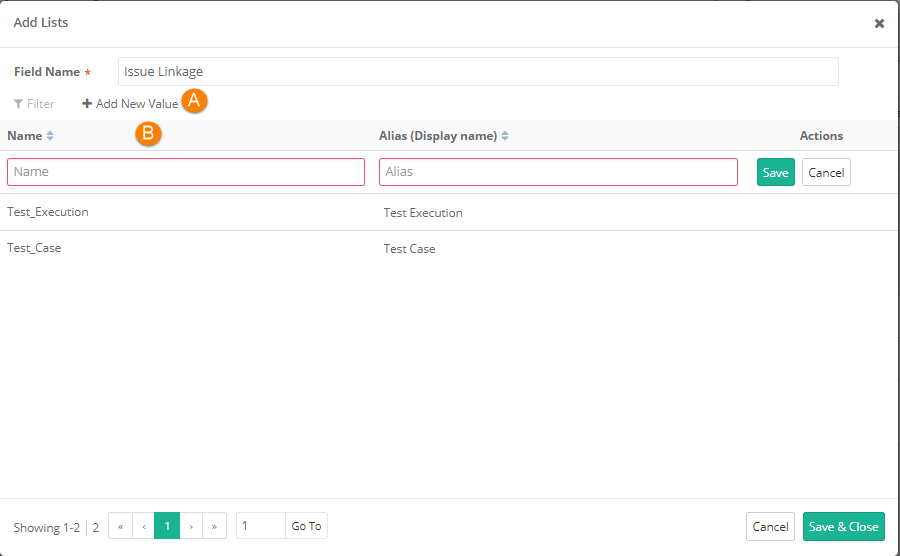Back to QMetry All Products Help Page
Lists
Introduction
QMetry allows users to add custom lists to record custom information for different asset types. Based on your requirement you can add/remove list values displayed for different fields of different modules in QMetry. Lists & Drop-downs are considered as a repository for all the lists which are going to be used in different modules of QMetry Test Management like Requirement, Test Case, Test Suite, and Issue. The Lists are used when user defined fields are added with either type "Lookup List" or type "Multi Select Lookup List".
- System Defined Lists: These custom lists are general lists in QMetry Test Management modules e.g., Component, State, Priority.
- User Defined Lists: If the Admin wants to have list which is not present in the default lists, then they can create a new list and add values into that.
The Lists screen displays System Defined Custom Lists as well as User Defined Custom Lists. User Defined Custom list can be identified by having the Delete icon with the Edit icon. You cannot delete System Defined Lists. You can just edit the List Name of System Defined Lists.
Custom Lists Screen
The screen displays the following columns on it:
- List Name
- List Values: It displays number of items related to current project only. For example, Project A has 3 values and Project B has 5 values in the same custom list ABC. You are currently working in Project B. Hence, the Count for List Values will be 5.
- Actions: The column has the Edit button under it to edit the list values.
This new custom list has to be linked with UDFs and that UDFs can be shared with different modules like Requirement, Test Case, Test Suite, and Issue.
Adding a New List
Click on the New button on the header.
The screen opens to create a new List.
Enter Field Name in the field.
Adding a List Value
The Admin can add new values to a list in User Defined List as well as in System Defined Custom List.
A. Click on the Add New Value button on the screen to add new list values.
B. A blank inline appears with Name, Alias and Value fields on it.
- Name: It should be unique for each list value.
- Alias: Alias is the value that appear on the list. List value name validation is case-insensitive. For example, if "None" is already present in the list value, the user can not add "none" as other value.
Use Case 1. Customers want to customize the UI using an alias that suits the environment in their organization.
Use Case 2. An organization have users distributed geographically and they want to localize values of Custom Lists they use. For the reason, the organization makes use of the Alias field to maintain the list values in local language.
Editing a List Value: You can edit Alias of a List Value by clicking on the cell of individual values.
Archiving and Deleting List Values
System defined list values of system lists can not be archived and deleted.
Users can archive and delete only custom list values which are added by users.
For example, the users can not archive the default values “Manual” and “Automated” of the testing Type list because it impacts other operations.
When you import test cases from Excel, these test cases are imported with Manual as Testing Type. If you archive/delete “Manual” and try to import test cases from Excel, then the import will fail.
Editing a List
To edit a List, click on the Edit button under the Actions column. You can add List Values using the Edit option.
Deleting a List
You can only delete user defined custom lists. System defined custom lists can not be deleted.
To delete a Custom List, click the Delete button under the Actions column.
A. System Defined List
B. User Defined List
Note : You cannot modify the above settings if the Customization package is disabled on your QMetry instance.
Back to QMetry All Products Help Page


